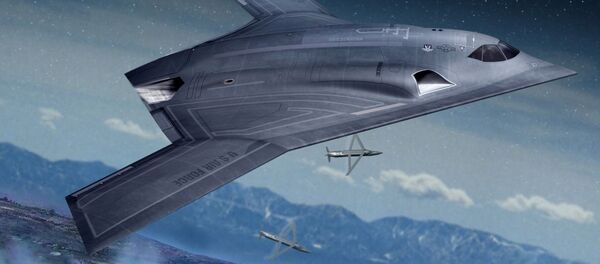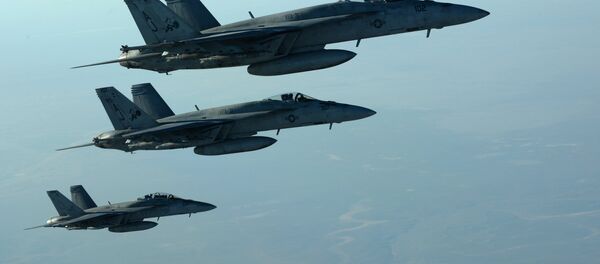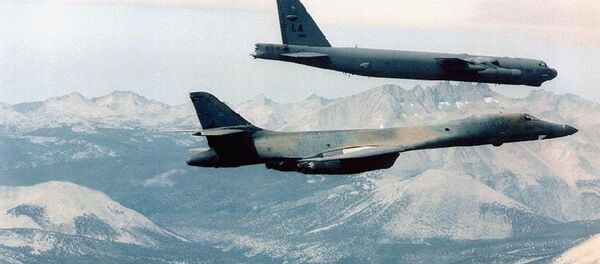Earlier this week, the Pentagon ended months of speculation by announcing that Northrop Grumman would build the next-generation LSR-B. With an estimated budget in excess of $100 billion, the US Air Force wants 100 new warplanes to replace its aging fleet of B-1 and B-52s.
Tuesday’s announcement was, however, cagey about specifics. Military officials refused to even give details price estimates, instead providing estimated totals based on 2010 dollars.
But experts are already beginning to piece together what we can expect of the aircraft, based on existing technologies and the Pentagon’s stated expectations.
For one, a primary focus will be placed on stealth.
"It would carry on-board electronic attack equipment to supplement its stealth," Loren Thompson of the Lexington Institute told AFP.
"It must be stealthy in all parts of the electromagnetic spectrum. It has to have electronic, on-board jamming equipment that would add to its stealth by preventing enemy sensors from working."
That would partially explain why the contract went to Northrop. While a joint team comprised of Boeing and Lockheed Martin was expected to land the deal, Northrop’s expertise in stealth technology could have pushed it over the edge.
Stealth will be necessary, since the new LSR-B probably won’t fly at supersonic speeds. According to aviation analyst Richard Aboulafia, doing so would decrease the plane’s range by wasting fuel. Range is critical, as Air Force Secretary Deborah Lee James said the LSR-B would have "the capability to launch from the continental United States air strikes that would be able to strike any location in the world."
But slower speeds would make the bomber easy to spot, and vulnerable to ground fire. Powerful onboard jammers would then be critical to prevent detection over enemy territory.
Other specifics have been vaguely referenced by Pentagon officials. Tuesday’s announcement made note of a desired dual payload capability, allowing the new bomber to carry both conventional and nuclear weapons.
The Air Force has also expressed an interest in the aircraft having the option of flying without a manned crew.
A sophisticated electronic network will also mean that Northrop will have to focus on cybersecurity to ensure that the aircraft is hack-proof.
Other experts also point out that the US needs to avoid the embarrassing pitfalls of the F-35 debacle. Costing nearly $400 billion, the fighter jet has been riddled with technical problems, and the Pentagon’s own tests have shown that the F-35 is outperformed by both Russian and Chinese counterparts, and even older US aircraft.
Part of the problem was that the military continuously readjusted design specifications throughout the F-35’s development. Sticking to a cohesive plan could help the new LSR-B.
"As the program progresses, new threats will be identified, new technologies will emerge, and the temptation to change the program’s requirements will be great," Todd Harrison and Andrew Hunter wrote in a paper for the Center for Strategic and International Studies.
"The Air Force must resist these temptations if it wants to keep to its cost target."
During Tuesday’s press conference, Air Force General Mark Welsh hinted at something similar, by suggesting that "we’re designing the platform to be adaptable."
"This open architecture will help ensure competition throughout the life cycle of the program, and make it easier to modify the platform as technology advances and the threats evolve."
Of course, the F-35 was also designed with open architecture in mind.






